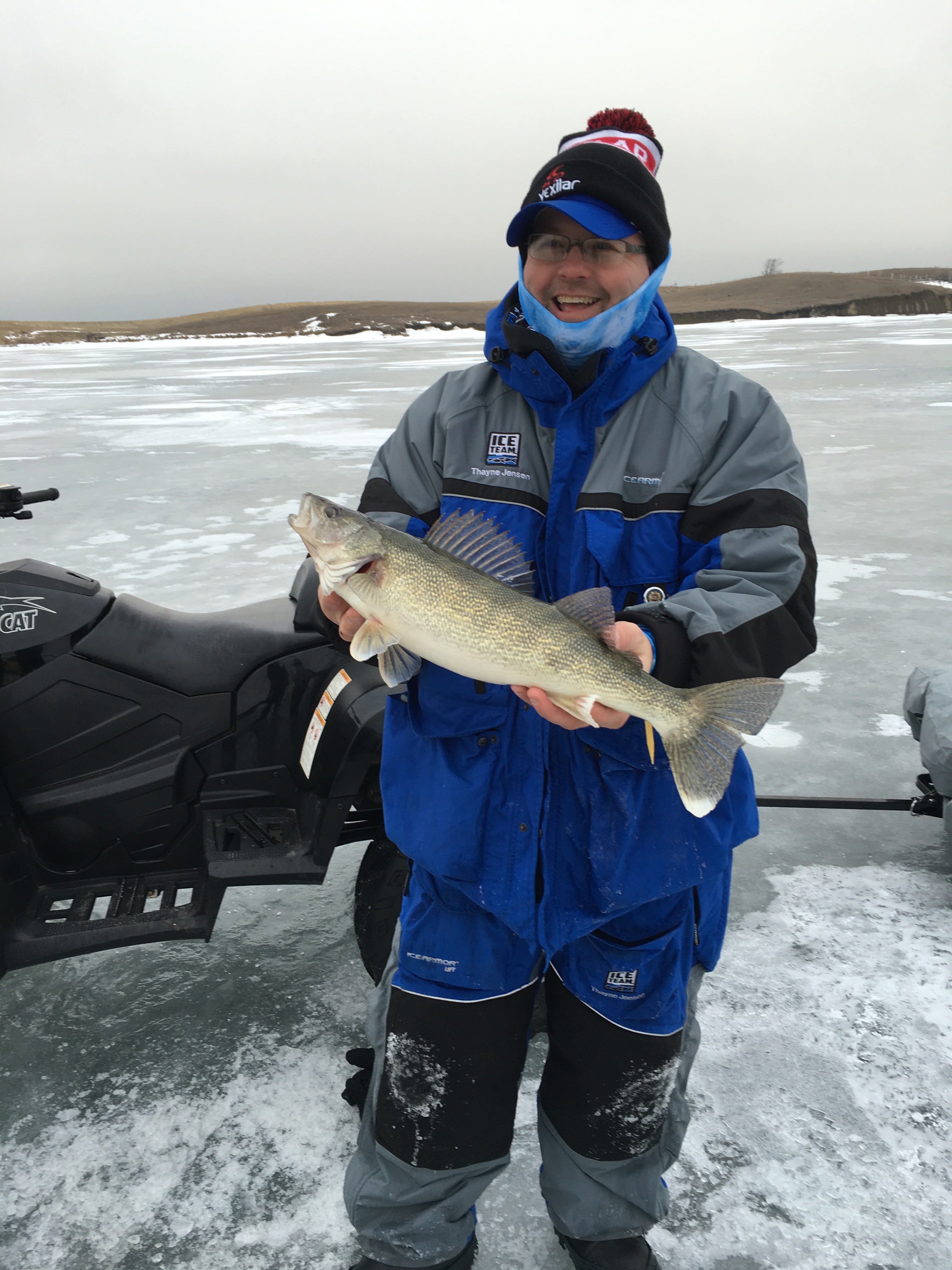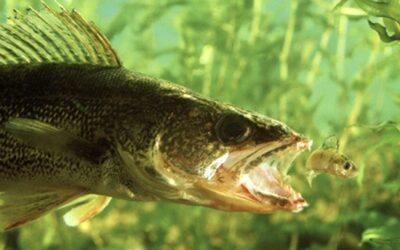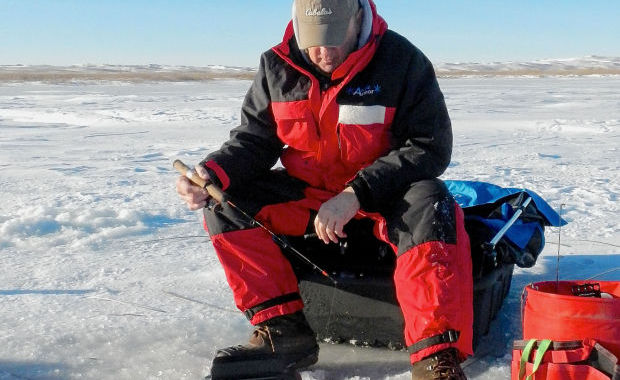It’s late season, the slow time of the year when it comes to ice fishing. In order to locate the fish, you may have to punch a bunch of holes in the ice and use every trick in your tackle bag to get the fish to bite.
When I first hit a body of water to ice fish, I will punch numerous holes in several directions; with the ice, where we will be fishing, the ice will resemble Swiss cheese.
As I pull my auger from the hole and head for the next spot: my fishing partner drops the Vexilar transducer in the hole and calls out the depth. We repeat this until we have an idea as to where the bottom configuration changes, if there is any structure below us and of course if there are any fish.
Fish like to relate to something, it could be a change in bottom depth, what is lying on the bottom or the edge of vegetation that is still standing, something making one area different from others. That is what you are looking for when you start punching your holes in the ice, the change.
When the water gets cold, fish will be looking for comfortable water temperatures, but that does not mean they will spend all of their time in that area, they will still move around checking out their environment and be looking for what little food they now need.
It always seems that the first bite comes right after we drop our bait down the first time. Some believe it is because what froze in the ice broke loose and now drifts to the bottom attracting the fish.
If the first bite comes quickly, then the bite dies, we do not spend much time there as we are looking for large concentrations of fish as fish in schools are competitive and will try to beat the other fish to the bait.
How you fish a lake or pond depends on what species were after. If we are in a lake with walleyes and perch, our first bait going down will be a larger spoon tipped with a minnow head or a whole minnow. If the fish follows, but refuse to bite, it is a good indicator your lure is too large for what’s swimming around down there. If that happens, we will quickly go to our back up rod with smaller lure tipped with wax worms.
Perch unlike their cousin, the walleye have a smaller mouth and many times will peck at a larger bait but not be able to pull the larger bait into their mouth.
If we are fishing, a body of water, with a good population of panfish, we may start with a live bait rig, a small minnow suspended below a small foam bobber.
If we are jigging, and because panfish peck at the bait, it is hard to detect their subtle bite; this is when a spring bobber comes in handy, attaching to the end of your rod with the line running through the eye. When a perch or other panfish messes with your bait, the spring will bend indicating a bite. The best spring bobbers have a larger eye that will not freeze up as quickly as those with smaller eyes will.
In the winter, we generally do not have to worry about the clarity of the water, but there are times you may run into a situation where you have to deal with murky water, when you do, it is not a bad idea to go to a rattle spoon, something that makes a little noise.
When we are working a hole our Vexilar shows fish, our first line going into the water is generally a heavier jigging spoon we drop to the same depth the fish are holding.
Fish on the Vexilar appear as a green or red line, green for a smaller fish or one that is not directly below the transducer. Larger fish appear as a thicker red line and this is where we want our bait to be. The lure will appear as a thinner red line and once the fish moves to the same depth as your lure, the red line will become wider. If you can get the fish to follow your bait, nine times out of ten the fish will hit it.
Jigging for fish on hard water is a lot different from jigging on open water. Because the fish’s metabolism has slowed, they are not moving much, using less energy, not needing much to eat. Slow is the name of the game when ice fishing.
Remember, the depth of the water makes a difference when it comes to how much you need to jig. If you’re fishing shallow water, it doesn’t take much movement of you rod tip to make a jig dance, but when fishing ten foot depth or deeper, you’ll need to jig a bit more aggressively to get the bait on the end of the line to move.
How much action you should put on your lure depends again, on what species you are after? When fishing for walleye and northerns, you will use bigger baits to get the fish’s attention. When we are after these species of fish, we always start ripping the bait upward and then letting it free fall. Once you spot a fish on the locator, move your bait to the depth the fish are, hold and then slowly raise your bait. If the fish follows, hold your bait just above it, motionless, and if it loses interest, jiggle it a bit. If it still refuses to bite, try bringing it up, if that fails drop your bait to see if the fish follows. If it does not follow, reel up quickly and go back down with smaller baits.
When fishing or panfish, you will want to tone it down a bit, start with a larger bait to get their attention and then downsize to a more subtle presentation, using a smaller bait, fishing it in the same way mentioned above.
I have learned that over the years there are those days when no how hard you fish, when no bait is working and the fish just will not bite. It is nice to be out on the ice and a lot better than a hard day at work, but it might be best packing it in and coming out on another day when the bite will be better





0 Comments